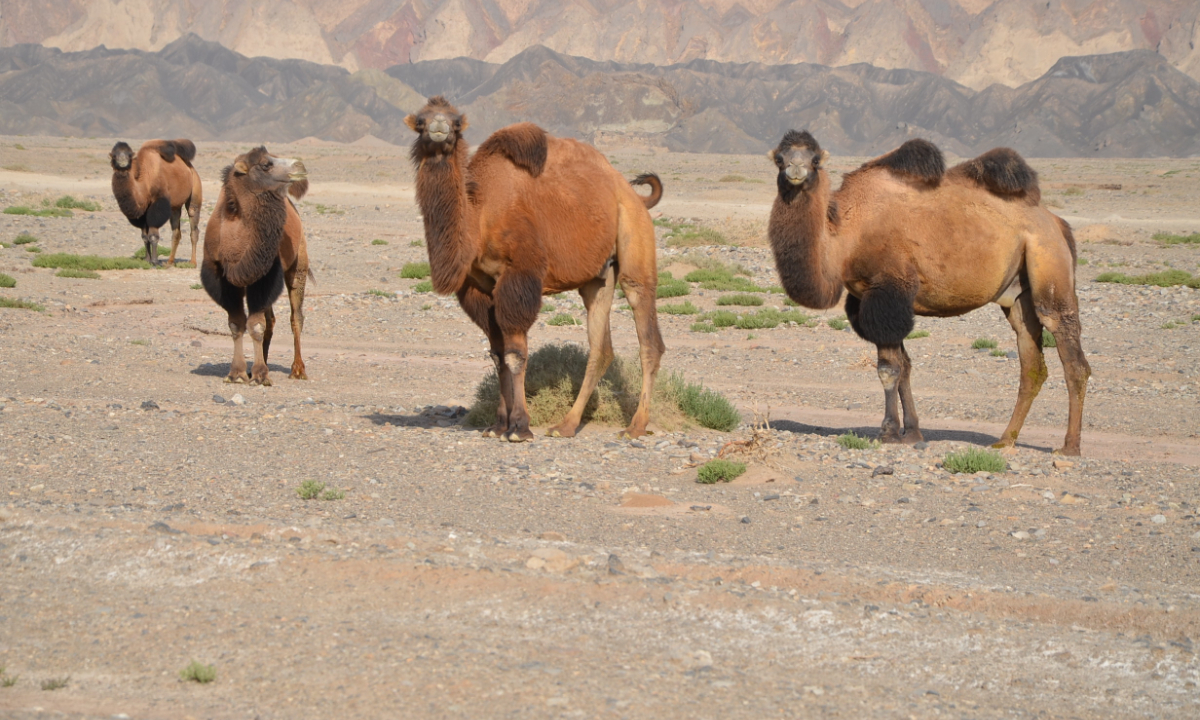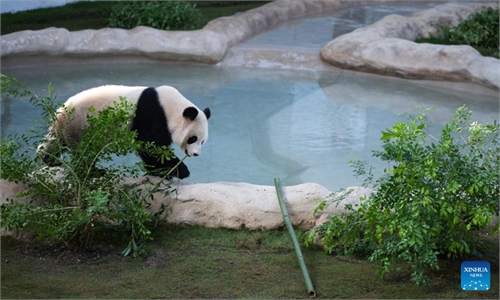Wild life in China: Conservation measures create vibrant habitat for wild camels in Xinjiang

Wild Bactrian camel in the Xinjiang Uygur Autonomous Region Photo: IC
Although it is known as the "sea of death" due to its arid and barren environment, Lop Nur in Northwest China's Xinjiang Uygur Autonomous Region is not devoid of life. It is a paradise for wild Bactrian camels, one of the larger mammals in the deserts of the Asian hinterland. Thanks to a nature reserve that was specially built for them, these critically endangered animals are coming back from the brink. As a flagship species of extreme arid desert ecosystems, wild Bactrian camels are of great importance to the world's biodiversity.
In 1988, China listed wild Bactrian camels as a national key protected wildlife species, and in 2002, the International Union For Conservation Of Nature listed it as a critically endangered species.
Thankfully, China has always been concerned about the survival of this species.
In 1986, the local government established the Lop Nor Wild Bactrian Camel Nature Reserve. In 2003, with the approval of China's State Council, the reserve was upgraded to a national-level reserve. Since the establishment of the 61,200 square kilometer reserve, the management has implemented scientific wildlife protection measures and comprehensively strengthened the management of biodiversity protection in. In recent years, the reserve has made significant progress in surveying and monitoring the species. The administration has strengthened basic management capacity, established automatic ecological monitoring stations, video monitoring platforms,and patrol and law enforcement supervision systems. Additionally, relevant departments have cracked down on all kinds of illegal acts in protected areas, carried out ecological treatment and restoration measures to effectively protect the camel's habitat. The reserve has installed satellite tracking equipment for 26 wild Bactrian camels and uses infrared cameras to continuously monitor the animals.
The number of wild Bactrian camels in the reserve has increased steadily. At present, the camel population in the reserve has increased from about 430 in 2000 to about 680. In addition to wild Bactrian camels, snow leopard, brown bears, dholes, Pallas's cats and other nationally protected wild animals are constantly being recorded in the national nature reserve, making this once lifeless land increasingly rich in species diversity.

